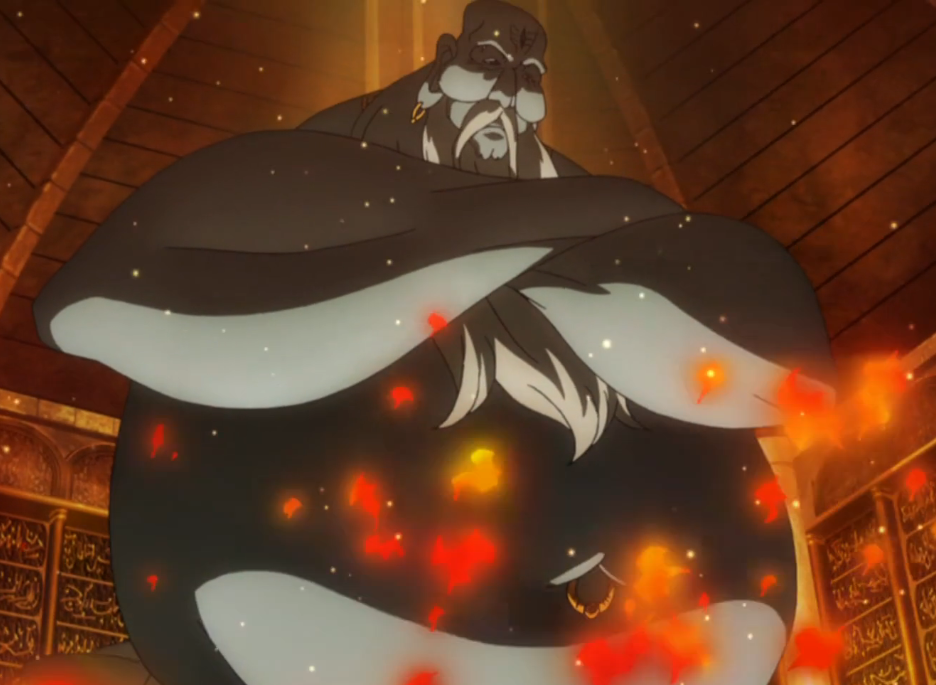

The full name "Ashmedai" is not found in the standard Masoretic canon of the Hebrew Bible. Furthermore, it is stated that Asmodeus or Ashmedai "embodies an expression of the influence that the Persian religion or Persian popular beliefs have exercised" on Judaism. However, the Jewish Encyclopedia asserts that although 'Æshma does not occur in the Avesta in conjunction with dæva, it is probable that a fuller form, such as Æshmo-dæus, has existed, since it is paralleled by the later Pahlavi-form "Khashm-dev"'. Still, the encyclopedia proposes that the "Asmodeus" from the Apocrypha and the Testament of Solomon are not only related somewhat to Aeshma but have similar behaviour, appearance and roles, to conclude in another article under the entry "Aeshma", in the paragraph "Influence of Persian Beliefs on Judaism", that Persian Zoroastrian beliefs could have heavily influenced Judaism's theology on the long term, bearing in mind that in some texts there are crucial conceptual differences while in others there seems to be a great deal of similarity, proposing a pattern of influence over folk beliefs that would extend further to the mythology itself. The Jewish Encyclopedia of 1906 rejects the otherwise accepted etymological relation between the Persian "Æshma-dæva" and Judaism's "Ashmodai" claiming that the particle "-dæva" could not have become "-dai" and that Æshma-dæva as such-a compound name-never appears in Persian sacred texts. Some traditions have subsequently identified Shamdon as the father of Asmodeus. The name is alternatively spelled in the bastardized forms (based on the basic consonants אשמדאי, ʾŠMDʾY) Hashmedai (חַשְמְדּאָי, Ḥašmədʾāy also Hashmodai, Hasmodai, Khashmodai, Khasmodai), Hammadai (חַמַּדּאָי, Hammadʾāy also Khammadai), Shamdon (שַׁמְדּוֹן, Šamdōn), and Shidonai (שִׁדֹנאָי, Šīdōnʾāy). The spellings Asmoday, Asmodai, Asmodee (also Asmodée), Osmodeus, and Osmodai have also been used. In the Zoroastrian and Middle Persian demonology, there did exist the conjuncted form khashm-dev ( خشم + دیو), where both terms are cognates. It is nonetheless likely that such a form did exist, and that the Book of Tobit's "Asmodaios" ( Ἀσμοδαῖος) and the Talmud's "Ashmedai" ( אשמדאי) reflect it. While the daēva Aēšma is thus Zoroastrianism's demon of wrath and is also well-attested as such, the compound aēšma-daēva is not attested in scripture. The name Asmodai is believed to derive from the Avestan *aēšma-daēva (𐬀𐬉𐬴𐬨𐬀𐬛𐬀𐬉𐬎𐬎𐬀*, * aēṣ̌madaēuua), where aēšma means "wrath", and daēva signifies "demon". In Islam, he is identified with the "puppet" mentioned in the Quran, which dethroned Solomon and reigned over his kingdom until he got his kingship back.Įtymology The figure of Asmodeus in Rennes-le-Château The demon is also mentioned in some Talmudic legends for instance, in the story of the construction of the Temple of Solomon. In Peter Binsfeld's classification of demons, Asmodeus represents lust.

Asmodeus is mostly known from the deuterocanonical Book of Tobit, in which he is the primary antagonist, or the Ars Goetia. In Judeo-Islamic lore he is the king of both daemons ( jinn/ shedim) and demons ( divs). Asmodeus as depicted in Collin de Plancy's Dictionnaire InfernalĪsmodeus ( / ˌ æ z m ə ˈ d iː ə s/ Ancient Greek: Ἀσμοδαῖος, Asmodaios) or Ashmedai ( / ˈ æ ʃ m ɪ ˌ d aɪ/ Hebrew: אַשְמְדּאָי, ʾAšmədʾāy see below for other variations) is a prince of demons and hell. For the Phoenician city and its inhabitants, see Sidon.


 0 kommentar(er)
0 kommentar(er)
